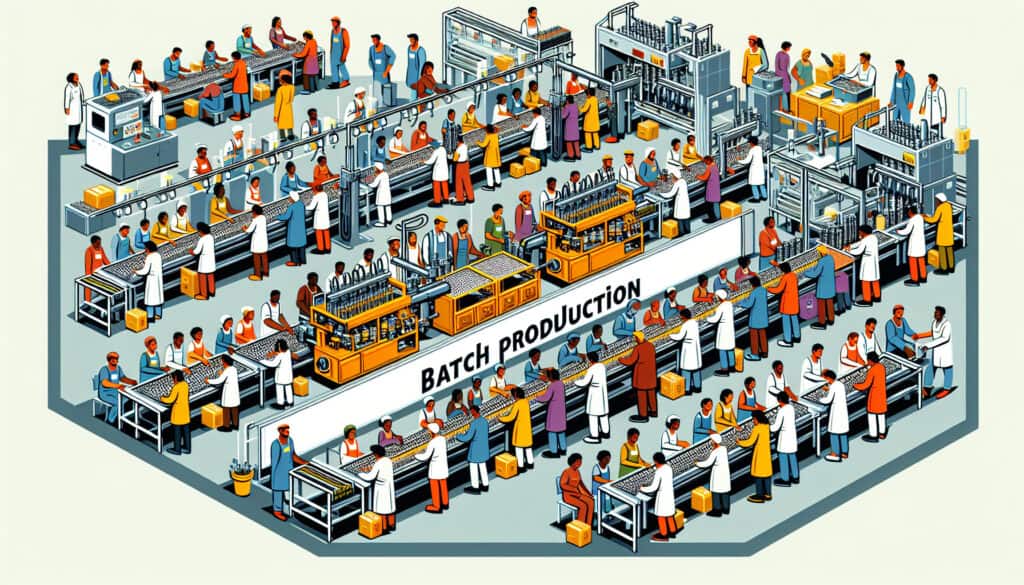A 制造业 方法 即一批相同的产品集中在一起生产。
- 方法: 客户与营销, 构思, 产品设计
批量生产

批量生产
- 持续改进, 精益制造, 制造业, 流程改进, 产品开发, 生产效率, 质量控制, 质量管理
目标
如何使用
- 批量生产是一种常见的制造方法,用于生产从食品和饮料到药品和化学品等各种产品。
优点
- 是一种灵活的制造方法,可用于生产多种产品,比作业生产更有效率,并可用于大量生产产品。
缺点
- 效率低于批量生产,比作业生产需要更多的准备时间,并可能导致大量在制品库存。
类别
- 精益西格玛, 制造业
最适合:
- 生产适量的各种产品。
批量生产广泛应用于汽车制造、消费品和纺织品等各行各业,在这些行业中,产品是按组或 "批次 "生产的,而不是按连续流生产的,这样就可以灵活地在不同产品类型之间进行切换。这种方法尤其适用于生产需要适应不同季节需求的情况,例如在食品加工中,季节性原料可能会决定不同的产品线。在设计阶段,工程师和产品设计师会合作制定规格和流程,以适应波动的产量,因此这种方法是电子产品或时尚产品等生命周期较短的产品的首选。批量生产项目的启动通常需要产品经理、供应链专家和自动化工程师等利益相关者的参与,从而营造出一种加强部门间协作的环境。这种方法还可以在批次之间进行质量控制检查,从而提高产品的可靠性,尤其是在制药等需要严格监管标准的行业。因此,企业可能会实施批量生产,以利用与规模经济相关的成本效益,最大限度地降低生产成本,同时保持适应性,以迎合不同的消费者偏好和市场趋势。
该方法的关键步骤
- 根据订单数量和时间表设计生产计划。
- 为特定批次的产品设置生产线和设备。
- 按照规定的规格和流程生产批量产品。
- 在整个生产过程中进行质量控制检查。
- 包装成品,确保符合监管要求。
- 清洁并重新设置生产线,以备下一批生产(如适用)。
- 分析生产效率,确定需要改进的领域。
专业提示
- 利用流程图找出瓶颈,优化工作流程,确保批次之间的转换更加顺畅。
- 在每个生产阶段实施健全的质量控制系统,及早发现异常,减少浪费和返工。
- 利用数据分析准确预测需求,根据市场需求调整生产计划,降低库存成本。
历史背景
1949
1950
1950
1960
1960
1960
1960
1940
1950
1950
1958
1960
1960
1960
1960
(如果日期不详或不相关,例如 "流体力学",则对其显著出现的时间作了四舍五入的估计)。















相关文章
肌肉骨骼不适调查表
多变量测试(MVT)
多元回归分析
动作捕捉系统
MoSCoW 方法
情绪中值测试